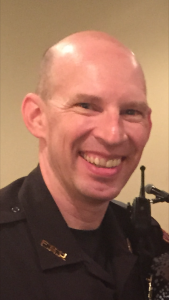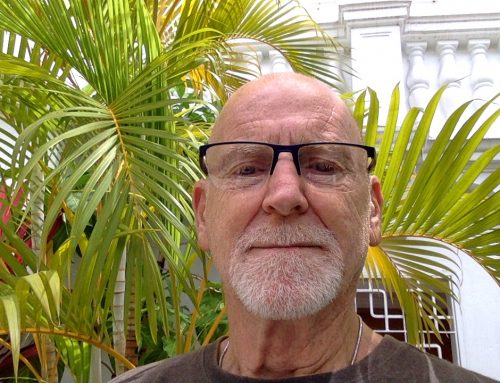As advocates for mental health and help seeking, we often discover
that a great chasm separating us from help is gouged open by fear and
shame. Treatments have become more effective, and more people in our
community voice their support, yet it seems that too many people who
need help slip through the cracks and spiral, alone, in to
destructive, and sometimes fatal patterns. To those of us who are
outspoken, supportive, and ready to shout for our place, it can be
disheartening to see those we care about suffer. We write blogs, we
speak publicly, we show our art and write poetry, we create and join
groups, and we pour our hearts out in every media outlet available.
Yet, still, so many people fear taking the step to seek help.
While is seems counterintuitive, we may be experiencing what has been
a phenomena in law enforcement, my world, for years. It is called
“siloing” and speaks to the idea of like-minded people forming a
supportive, but exclusive social group, because persons in that group
have a unique experiential connection. Similarly, we who experience
mental illness feel more safe around one another, can confidently back
each other up, and have an understanding and empathy that is truly a
separate world view. We can see this in our Twitter and Facebook
accounts. I for one, have a large percentage of my friends and
associates identifying as persons who either suffer from mental
illness, have experienced it in their family, or who are clinicians in
the field. I really like it that way, but I have also come to
understand that the people that we need to reach, and who are mostly
likely to perpetuate stigma, are not in our group, but are outside our
silo.
My personal advocacy has focused on reducing stigma by highlighting
the fact that persons with mental illness, such as myself, can, with
treatment and support, often live fulfilling and successful lives. I
use my position as Deputy Chief of Police at FSU while also being
diagnosed with chronic depression, generalized anxiety disorder, and
panic disorder, as a personal example. It has been a good tool to turn
stereotypes about mental illness on their heads, and the means I have
used to deliver it is a program called Sworn to Silence, which I wrote
in 2012. Sworn to Silence has provided an excellent delivery, but one
of its shortcomings is its first-responder centered focus. It
explains, clarifies, and debunks a lot of myths about mental illness,
but it does not recruit allies outside of the mental health world.
With that in mind, late in 2016, I knew that I needed to develop
another program, and this program would be focused on developing
natural allies.
So, I set out to create a presentation that would encourage outreach
into a group of people who are not deeply entrenched or invested in
the mental health world. At its core, the program would have as its
mission, “To invest in a new vision to eliminate stigma, promote
help-seeking, and save lives.” This would be accomplished by
providing an easy to remember and utilize action-template that sets a
path toward mental health ambassadorship. I created an acronym for the
program: I.N.V.E.S.T.I.G.A.T.E., for Invest in a New Vision, Eliminate
Stigma, Tell and Inform, Guide Attitudes, and Take up Empathy. Of
course, the name is also a nod to my cop roots – I can’t help it!
Each piece of the framework seeks to empower and create guidelines for
an advocate/ambassador to systematically promote a vision of mental
illness as not something to be feared, but something to be understood.
Moreover, it strengthens facts and removes fallacies that often cause
afflicted people to withdraw. For instance, take a single section of
the training, Tell and Inform. Here, this is further expanded to
impart to advocates that they must invest in their own knowledge and
education concerning mental illness, and it also discusses
environmental scanning. Environmental scanning, being a fancy way to
say that one should actively seek and take in current events and
research from a broad spectrum of media. Finally, with a well-informed
and objective advocate, this investment in education is demonstrated
through the ability to constructively engage in discussion up to and
including sharing one’s own story as a foundation, if comfortable
doing so.
Importantly, the program does not seek to develop or create a new
concept about what stigma is, or unveil some new wealth of knowledge.
Rather, it pulls known ideas and facts about stigma, mental health,
and advocacy and packages them into a compact and useful toolbox that
can be applied across a variety of social situations. The information
was reviewed for accuracy of content due to the gracious efforts of
the chief clinical psychologist at the FSU Counseling Center, which
provided me the confidence to push forward. For those who take part in
the program they can think about it as a multi-tool for mental health
advocacy. How you use the tool and how often is up to you.
Stigma-fighting is not so much a science as it is an art that is
fortified through knowledge and good facts. As advocates and
activists, it is our job to paint the picture of mental illness as it
really is, an illness, and not a statement as to the value and worth
of the person who suffers with it. Unfortunately, we share our canvas
with untold numbers of people who paint with ignorance. It is our
charge to ensure that our artwork, our fight, is more rich, more
engaging, and more absorbing than all of the noise that’s splattered
about.
The people that we are, and who we fight for are beautiful, and our
work must help open the eyes of others who should see them.
I hope this program will help do that.
 Jim Russell is the Deputy Chief of Police at the Florida State University Police Department where he has served for over 24 years. He became involved in mental health awareness and suicide prevention
Jim Russell is the Deputy Chief of Police at the Florida State University Police Department where he has served for over 24 years. He became involved in mental health awareness and suicide prevention
as he dealt simultaneously with increasing incidents of suicide on campus as well as his own diagnosis of major depressive disorder in 2010. Deputy Chief Russell is dedicated to advocating for the elimination of stigma concerning mental health issues, prevention
of suicide and self-harm, encouraging senior management in first responder agencies to become better educated, and encouraging first responders to practice help-seeking without fear. He often conducts his advocacy on a bicycle as an ultra-marathon cyclist
demonstrating that “persons with mental illness can and do achieve great things and deserve respect and dignity”, and has completed multiple extreme distance cycling events to promote this concept. The core of his advocacy centers on his belief that, “If
I truly love the people I work with, then I will stand up for them on this issue”.




Leave A Comment